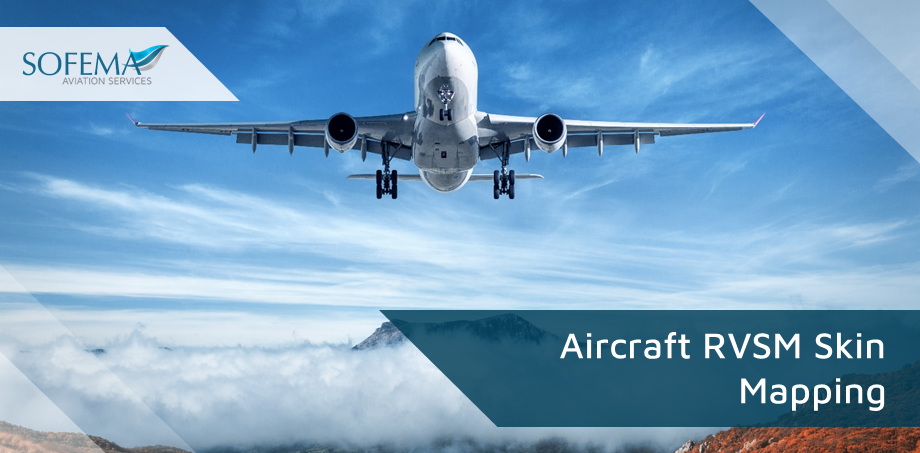Sofema Aviation Services (SAS) www.sassofia.com considers the steps which are necessary to ensure the Aircraft Reduced Vertical Separation Minima Skin in the vicinity of the Air Data sensors meets the skin waviness requirements.
Introduction
Aircraft RVSM Skin Mapping is a procedure performed to ensure the airframe’s surface condition (skin waviness) remains within acceptable limits as specified by the aircraft manufacturer. This is important because any irregularities on the aircraft’s external surface can cause altitude-keeping performance issues, potentially impacting RVSM compliance.
Specialized tools and equipment are required to accurately measure and assess the fuselage’s surface and provide documentation of compliance.
To perform RVSM skin mapping and ensure the fuselage meets the required smoothness standards, special tooling and equipment are used, typically in accordance with the following procedure.
- Preparation: Prior to the skin mapping procedure, the aircraft must be prepared. This may involve cleaning the surface, ensuring the aircraft is parked on a level surface, and setting up any required equipment.
o Position the aircraft on a level surface.
o Ensure the aircraft is unloaded and de-fueled.
o Remove any external equipment or devices that may interfere with the measurement process.
- Surface Profilometer: A surface profilometer is a specialized instrument used to measure the surface roughness of the fuselage.
o This device scans the aircraft’s skin to create a high-resolution, three-dimensional map of the surface. It can detect even minor deviations, such as dents or waviness, which may affect the aircraft’s RVSM certification.
- A high-precision surface mapping tool (e.g., profilometer or laser scanner) that can measure surface irregularities with high accuracy.
- A calibrated straightedge, typically a high-precision ruler or an electronic device with a straight edge.
- A feeler gauge to measure the gap between the straightedge and the aircraft’s skin.
o Digital Calipers or Micrometers: These precision measuring tools are used to measure the depth of any surface irregularities detected during the skin mapping process.
o They provide accurate measurements to help determine whether the fuselage meets the RVSM requirements.
- Reference Standards: To ensure accurate measurements, reference standards are used as a baseline for comparison during the skin mapping process.
o These standards can be physical objects, such as gauge blocks or flat plates, or digital references stored within the measuring equipment’s software.
- Record the measurements in the appropriate data recording method.
o Compare the measurements with the manufacturer’s specified limits for skin waviness.
o Identify any areas where the surface condition exceeds the allowable limits.
o Address any issues:
- If any areas exceed the allowable limits, consult the aircraft manufacturer’s guidelines or maintenance manual for corrective actions.
- This may involve repairing or replacing the affected aircraft skin panels or performing additional maintenance tasks.
- Data Analysis Software: Once the skin mapping data has been collected, specialized software may be used to analyze and interpret the measurements. This software allows technicians to assess whether the aircraft’s fuselage meets the required RVSM smoothness criteria.
- Documentation: If the aircraft passes the RVSM skin mapping procedure, a report is generated detailing the findings and confirming compliance with the RVSM requirements. This documentation is essential for obtaining or maintaining RVSM certification.
Next Steps
Follow this link to our Library to find & download related documents for Free.
Sofema Aviation Services www.sassofia.com provides the following course – RVSM Continued Airworthiness & Maintenance Requirements – 1 Day
For details please see the website or email team@sassofia.com
Tags:
Air Data, Aircraft, Aircraft Reduced Vertical Separation Minima Skin, Aircraft RVSM, Aircraft RVSM Skin Mapping, Airworthiness, aviation, aviation safety, Aviation Training, Compliance, Continued Airworthiness, Data Analysis, EASA, RVSM certification, SAS blogs, Sofema Aviation Services




